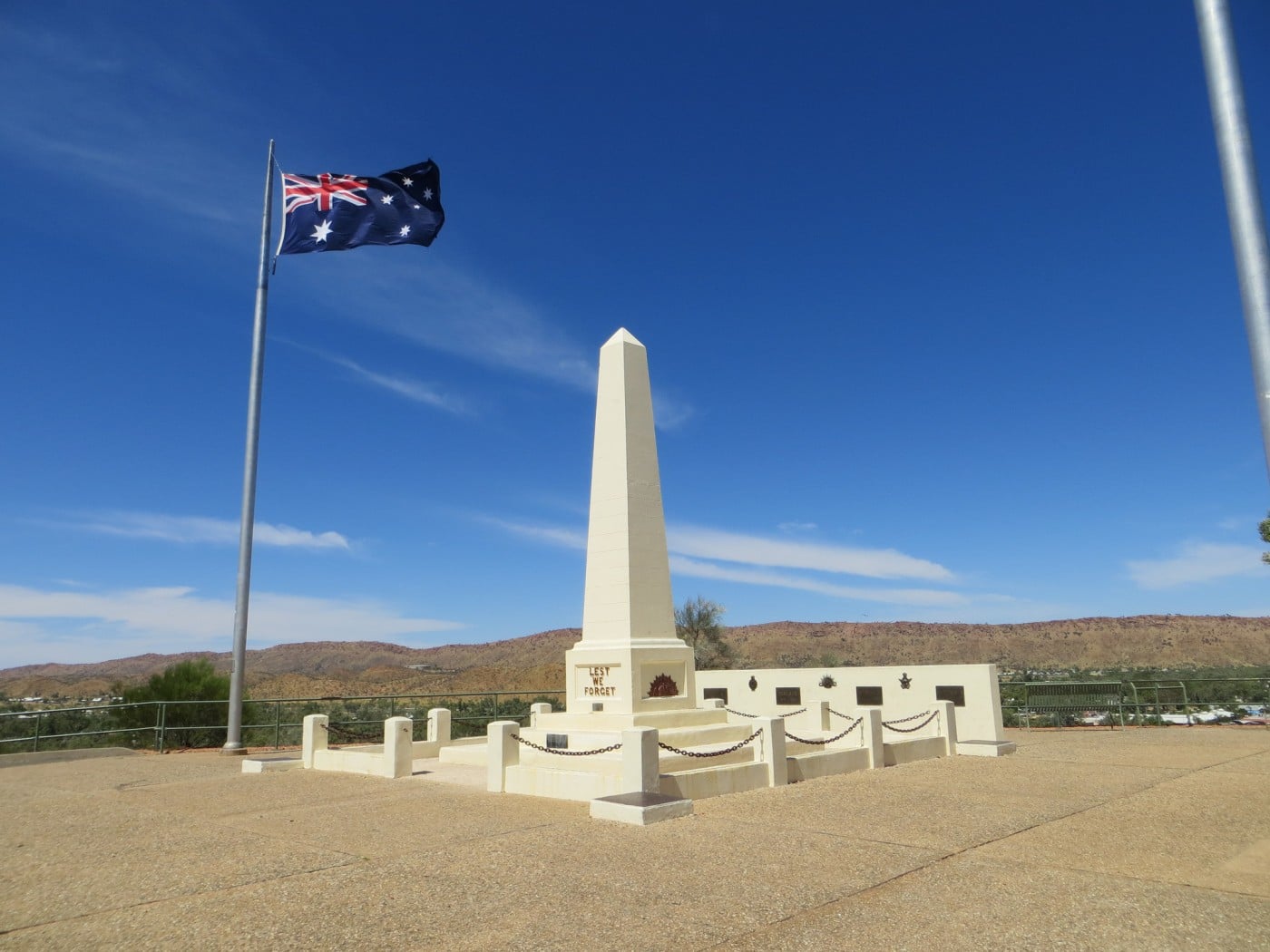Uluru-Ayer’s Rock and Alice Springs: the Red Heart of Australia

Catching the waves on one of its wide, picture-perfect beaches, it’s easy to forget that most of Australia is a vast wilderness of sun-blistered desert, an ancient world populated by a few hardy farmers and the continent’s first inhabitants, the Aborigines. At its heart, marooned in an endless sea of mulga scrub and hummock grass, lies the colossal sandstone monolith of Uluru, also known as Ayer’s Rock (so named in 1878 after the first European ‘discovered’ it).
No matter how you choose to experience it, you’ll be utterly mesmerized by the sheer size of Uluru. It’s truly enormous (1,142ft or 348m high, and 5.8 miles or 9.4km in circumference), and extremely incongruous; it really is stuck in the middle of nowhere and there’s nothing else quite like it.
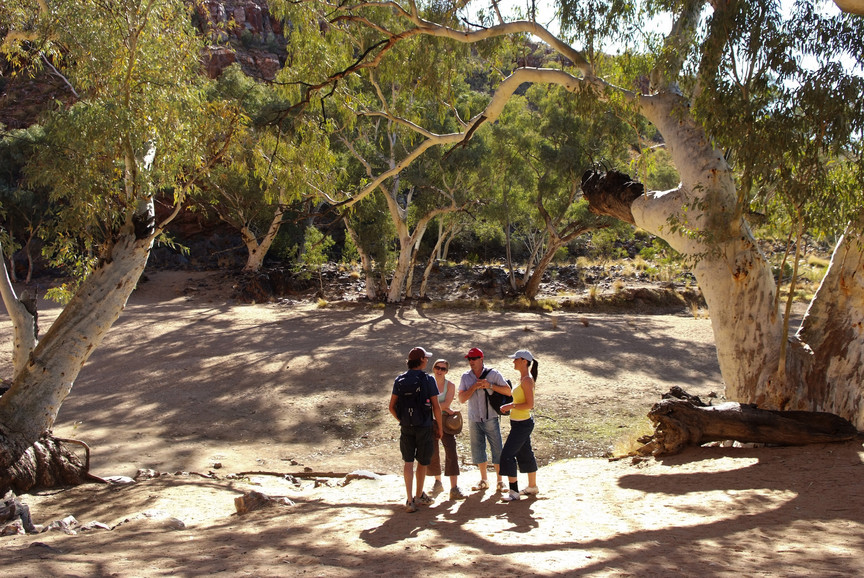
The Anangu plead with visitors not to climb it (so I didn’t), but they have never tried to enforce a ban and plenty of people do make the half mile (800m) hike up to the top – it’s much tougher than it looks so take plenty of water. Note that a current government proposal under consideration may, finally, ban climbing to the top.
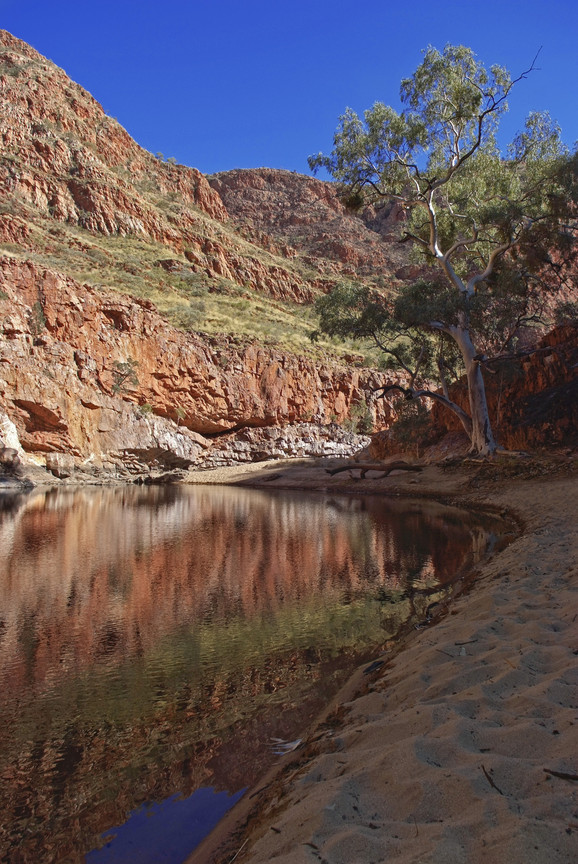 But the main draw for tourists is the colours. Although the carnival of tour buses and jeeps that assemble every morning and sunset to film, snap or admire the rock’s colourful transformation can be off-putting, watching the sandstone’s chameleon-like change from a thousand shades of earthy golds and ochres, to pinks and copper-tones, and finally a deep, ruby-red is unforgettable.
But the main draw for tourists is the colours. Although the carnival of tour buses and jeeps that assemble every morning and sunset to film, snap or admire the rock’s colourful transformation can be off-putting, watching the sandstone’s chameleon-like change from a thousand shades of earthy golds and ochres, to pinks and copper-tones, and finally a deep, ruby-red is unforgettable.
The Uluru-Kata Tjuta National Park
Uluru is sacred to the Pitjantjatjara (or Anangu), the Aboriginal people of the area, littered with marks, gullies and bumps representing tribal creation stories, a trove of ancient knowledge summed up by the Aboriginal concept of tjukurpa. Yet it’s also one of the most ingeniously packaged tourist sites in the world. You can view it by plane, bus and helicopter; you can climb it, ride a camel or Harley around it, and sip champagne, eat barbecues and have breakfast while admiring it.
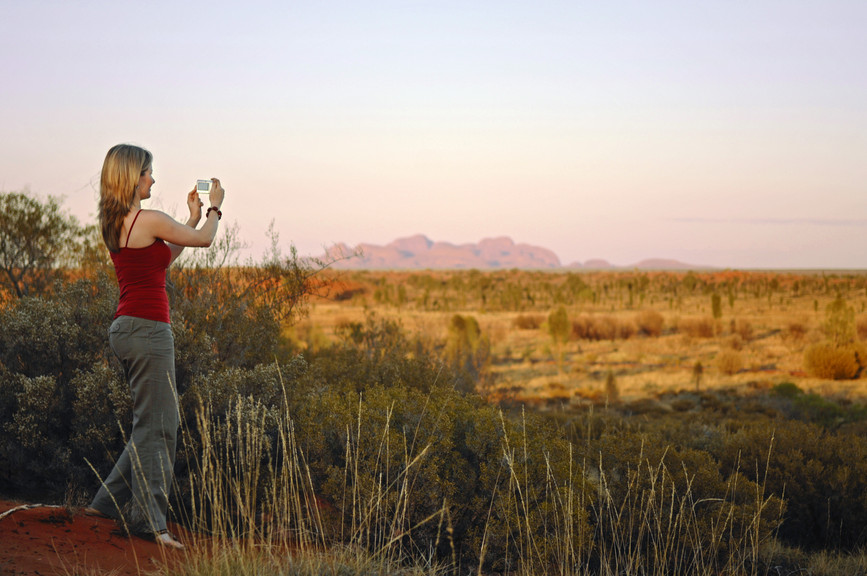
All trips to Uluru start and end in Yulara, a remarkable tourist town in the desert that exists solely for Ayer’s Rock, comprising an airport, accommodation options for every budget, shops and places to eat. Even if you decide to camp, national park restrictions mean that you must stay here. Yulara is wonderfully managed, but don’t expect some idyllic oasis – visitor numbers at any time of year can be overwhelming.
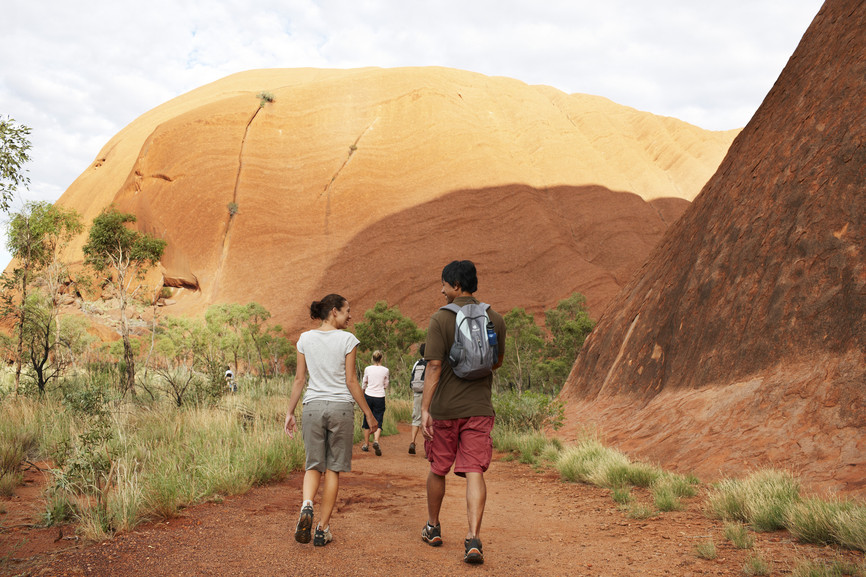
Protected within Uluru-Kata Tjuta National Park (Yulara is 11 miles or 17km from Uluru, just outside the park boundary), Uluru itself is owned by the local Anangu people and leased back to the government. The park’s cultural centre sheds light on their belief systems and stories (tjukurpa), while their tours take you close to, but not onto, the rock and put it into an Aboriginal context. To the Anangu, this land is still inhabited by the spirits of ancestral creator beings, referred to as tjukuritja. The journeys and exploits of these beings are recorded in the landscape and handed down through oral tradition. Sites of special significance are linked by what the Anangu call iwara (what author Bruce Chatwin dubbed ‘Songlines’), and known as ‘sacred sites’. For me, the key to Uluru is trying to see it within this Aboriginal worldview – otherwise it’s just a big rock, and the magic fades with the sunlight.
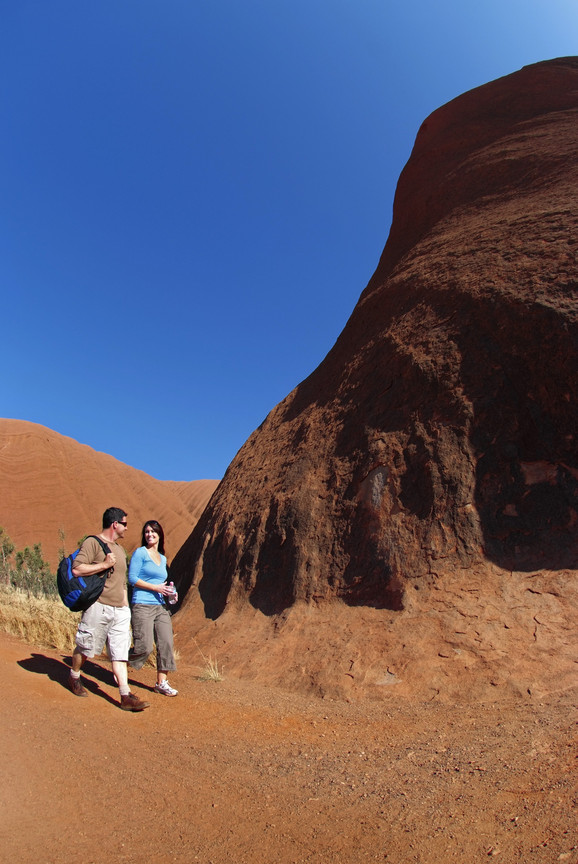 Getting your head around Aboriginal lore might take a lifetime of course, but taking the guided Mala Walk at least provides a good introduction. Along the way, local Anangu (usually with interpreters), talk about the two legendary boys that made Uluru after they had played in the mud after rain, and about the Mala (Hare Wallaby) people who once lived here. They will also point out cave art, local flora and sacred sites at the base of Uluru, ending up at Kantju Gorge, an important water hole. Your guides will also explain how it is possible for humans to survive in such a dry environment. Come in the southern winter and the red earth will be covered in spinifex, mulga and desert oak, but the vegetation is deceptive; water is a desperately rare commodity throughout Australia but especially here (you’ll be shaking red sand out of everything each evening). Aborigines once hunted kangaroo with ingenious devices such as the spear-thrower, and used mulga and bloodwood to make tools, spearheads, boomerangs and bowls. The red sap of the bloodwood was used as a disinfectant and a cure for coughs and colds.
Getting your head around Aboriginal lore might take a lifetime of course, but taking the guided Mala Walk at least provides a good introduction. Along the way, local Anangu (usually with interpreters), talk about the two legendary boys that made Uluru after they had played in the mud after rain, and about the Mala (Hare Wallaby) people who once lived here. They will also point out cave art, local flora and sacred sites at the base of Uluru, ending up at Kantju Gorge, an important water hole. Your guides will also explain how it is possible for humans to survive in such a dry environment. Come in the southern winter and the red earth will be covered in spinifex, mulga and desert oak, but the vegetation is deceptive; water is a desperately rare commodity throughout Australia but especially here (you’ll be shaking red sand out of everything each evening). Aborigines once hunted kangaroo with ingenious devices such as the spear-thrower, and used mulga and bloodwood to make tools, spearheads, boomerangs and bowls. The red sap of the bloodwood was used as a disinfectant and a cure for coughs and colds.
Take the bus back to Yulara and you’ll be back in the modern world with a bang. The giant rock looms on the horizon, but the tourist town transforms every night into something more akin to a Spanish beach resort, with barbecues and cold beer in abundance.
Alice Springs
On most maps of Australia, Alice Springs looks like it’s virtually the same place as Uluru-Ayer’s Rock, but this neat town of just over 27,000 people in the outback is actually a 208-mile (335km) and a five-and-a-half hour bus ride away. Alice is a sleepy but well-provisioned provincial town and the same otherworldliness that pervades Uluru is present here, albeit with a surreal dose of modernity. Flocks of pink and white parrots flutter over malls and pubs, while Aboriginal art is sold steps from clusters of depressingly inebriated Aborigines. Like Yulara, Alice is well-groomed for tourism, with the town divided into visitor-friendly themes and areas, everything tastefully presented and easily accessible – you’ll also find plenty of cheap accommodation in town. Unlike Yulara, the local Arrernte Aborigines are much in evidence here, as is the cultural and economic divide between them and most of the tourists. The 21st Century seems to have simply knocked them down.
The premier sight is the original telegraph station, built in 1872 as part of the construction of the Australian Overland Telegraph Line – the reason for the town’s existence – and the nearby ‘Alice’ spring (actually a waterhole). The latter (and the Todd River) are usually dry, adding to the surreality of the experience. Hike along the river from town and you’ll see little more than flocks of parrots in between the gum trees. It’s here at the tiny Telegraph Station, more than the town, that you really feel the absolute isolation of the outback. The beaches and surfboards of Sydney are 2024 miles (3258km) and another universe away.
{niftybox width=600}
Where to Stay:
Country Code for Australia is (61)
Ayers Rock Resort – The umbrella name for all the accommodation adjacent to Ayer’s Rock, with several options available within the tourist town of Yulara, ranging from the Ayers Rock Campground (08 8957-7001) and bunks at the Outback Pioneer Hotel and Lodge (08 8957-7605), to luxury suites at the Sails in the Desert Hotel (08 8957-7417). Yulara, NT; www.ayersrockresort.com.au.
Alice Springs:
Alice Station B&B. Friendly B&B in a bungalow constructed of original Ghan railway sleepers, just outside town, with big continental breakfasts, plenty of tea and cake (24hr) in the kitchen, Aboriginal art, and even wild kangaroos to feed. Some rooms have shared bathrooms. 25 The Fairway, Alice Springs; (08) 8953-6600; www.alicestation.com.
Lasseters Hotel & Casino. Classic, though slightly aging five-star on the outskirts of town (shuttle buses link to downtown), with spacious rooms (with free internet), a pool, free parking and decent on-site restaurants. Plus the casino, of course. 93 Barrett Drive, Alice Springs; (08) 8950-7777; www.lassetershotelcasino.com.au
Toddy’s Backpackers and Budget Accommodation. The backpacker standard in Alice, with fun, knowledgeable staff, always happening bar and decent barbeques. Rooms and dorms are what you’d expect in a hostel, but it’s cheap and you’ll make plenty of friends. 41 Gap Road, Alice Springs; (08) 8952-1322; www.toddys.com.au.
Restaurants and Nightlife:
Kuniya Restaurant – Elegant, upmarket restaurant specializing in traditional and contemporary Australian cuisine (and plenty of Australian wine). Opening hours are subject to seasonal demand. Reservations essential. Sails in the Desert Hotel, Yulara; (08) 8957-7417.
Pioneer BBQ and Bar – Most popular dining option at the Ayers Rock Resort. Do-it-yourself traditional Australian barbeque , with plenty of choice steaks and seafood, cold beers and live music every night. Open daily for dinner. Outback Pioneer Hotel & Lodge, Yulara; (08) 8957-7605.
In Alice Springs:
Bojangles – Good old Wild West meets Outback saloon, with cold Aussie beer and plates of ‘bush tucker’ (kangaroo, snake, crocodile and emu). Can get rowdy at the weekends. Open daily from 11.30am till late. 80 Todd St, Alice Springs; (08) 8952-2873; www.bossaloon.com.au.
Hanuman – Great Indian and Thai food in the Outback? Believe it – this place would garner a following in Sydney for its superlative dishes and fine service. Think butter chicken, delicious red duck curry and vegetarian korma. Open for lunch Monday to Friday from noon-2.30pm, and dinner every night from 6.30pm. Crowne Plaza Hotel, 82 Barrett Drive, Alice Springs; (08) 8953-7188. www.hanuman.com.au.
What to Do/Must See:
The Uluru-Kata Tjuta National Park (A$25 for 3 days) is open daily with times ranging 5am-9pm (Dec-Feb) to 6.30am-7.30pm (June-July). See www.environment.gov.au/parks/uluru.
Anangu Tours (www.ananguwaai.com.au) is an Aboriginal-owned company providing a range of tours by local Aboriginal people (from A$87 per person).
The Alice Springs Telegraph Station Historical Reserve is open daily 8am to 9pm all year round; the station itself is a small museum (daily 8am-5pm; A$7.50).

